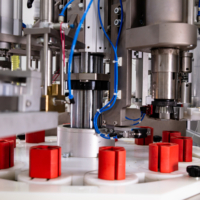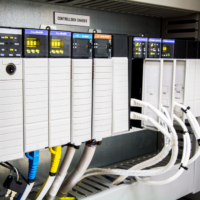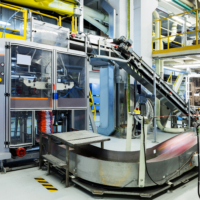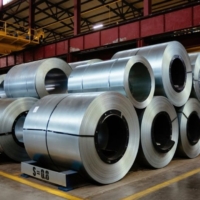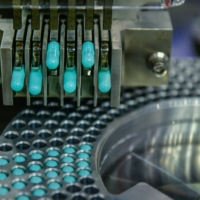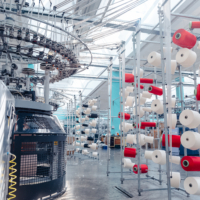What is a Servo Drive?
In this article:
- About Servo Drives
- What is a servo drive used for?
- How does a servo drive work?
- What is the difference between a servo drive and a normal drive?
- What are the advantages of a servo drive?
- Sources
About Servo Drives
A servo drive, also known as an amplifier, is designed to receive a control signal from a motion controller and then provides power to a servo motor in order to produce the desired motion or torque. The servo drive is a crucial component of a closed-loop control system. [1]
Servo drives come in a variety of sizes and power ratings, allowing them to be used in a wide range of applications, from small, low-power systems to large, high-power industrial machinery. They are also available in different configurations to accommodate various types of servo motors.
What is a servo drive used for?
A servo drive is a crucial component used in many industrial and commercial applications. Servo drives are commonly used in automation equipment, satellite communication, robotics, CNC machines, conveyor systems, packaging machinery and more. [2]
One of the primary functions of a servo drive is to convert low-power command signals from a controller (such as a PLC or computer) into high-power output signals that can drive a servo motor. This allows for accurate and responsive motion control in various mechanical systems. The servo drive amplifies the control signals while also regulating the speed, torque, and position of the motor, ensuring that it operates with precision and reliability.
In industrial manufacturing processes, servo drives are used for tasks such as positioning, indexing, cutting, welding and assembly. They are also essential for maintaining consistent speed and torque in conveyor systems and packaging machinery. In robotics, servo drives enable precise and coordinated movement of robot arms and manipulators, allowing them to perform intricate tasks with accuracy and repeatability.
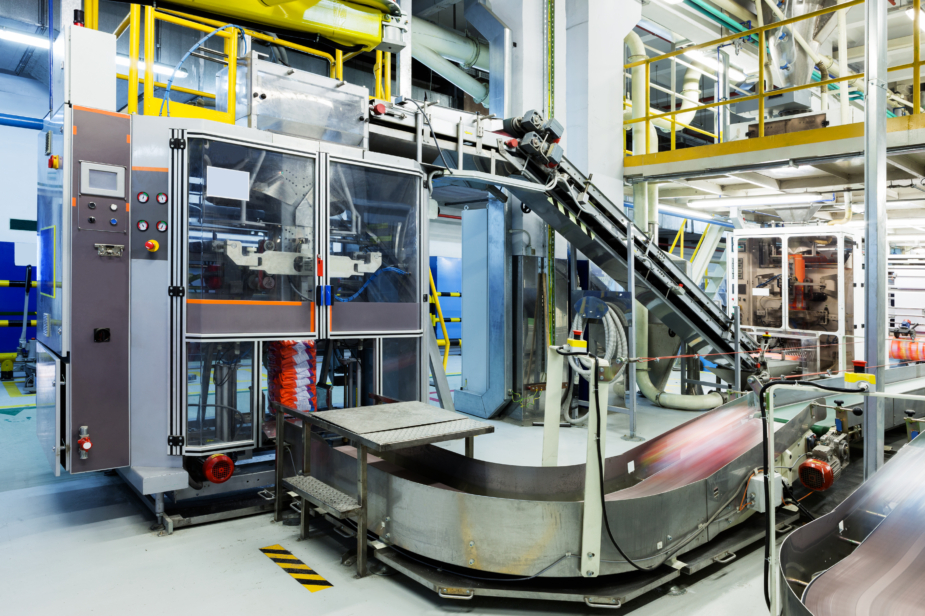
How does a servo drive work?
At its core, a servo drive uses a feedback control system to continuously adjust the output to the servo motor based on the difference between the desired position or speed and the actual position or speed. This is achieved through a combination of sophisticated electronics, software algorithms, and sensors.
The first step in the operation of a servo drive is to receive the input command from the control system, which could be in the form of a voltage signal, a pulse train, or a digital communication protocol. This command represents the desired motion or position of the servo motor.
The servo drive then processes this input signal using its internal control algorithms to generate the appropriate output signal for the servo motor. For example, if the command is to rotate the motor at a certain speed, the servo drive will adjust the voltage or current supplied to the motor to achieve the desired speed.
The crucial element in the operation of a servo drive is the feedback mechanism. This typically involves sensors such as encoders or resolvers that provide continuous feedback on the actual position, speed, or torque of the servo motor. The servo drive compares this feedback with the input command and makes real-time adjustments to ensure that the motor’s actual performance matches the desired performance.
The servo drive may also incorporate additional features such as safety functions, communication interfaces and diagnostic capabilities to enhance its overall functionality and reliability.
What is the difference between a servo drive and a normal drive?
A servo drive and a normal drive are both used to control the speed and position of a motor in industrial applications. However, there are several key differences between the two types of drives that are important to consider when choosing the right solution for a specific application.
One of the main differences is the level of precision and accuracy that can be achieved with a servo drive compared to a normal drive. Servo drives are designed to provide precise control over the motor, allowing for incredibly accurate positioning and velocity control.
Another difference is the level of flexibility and programmability that each type of drive offers. Servo drives typically have advanced control algorithms and feedback mechanisms that allow for precise tuning and customization to meet the specific requirements of a given application. Normal drives, on the other hand, may offer less flexibility and programmability, making them better suited for simpler applications with less demanding control requirements.
In addition, servo drives generally offer higher power density and better performance compared to normal drives. This allows for smaller and more efficient motor and drive solutions, making them ideal for applications where space and energy efficiency are important factors.
What are the advantages of a servo drive?
Servo drives feature several advantages such as:
Precise control – Servo drives offer precise control of motor speed and position, allowing for accurate and repeatable movements in various applications
High Performance – Servo drives can deliver high torque at low speeds, making them suitable for applications requiring high performance and responsiveness
Energy Efficient – Servo drives can optimize energy consumption by adjusting motor output to match the load requirements, leading to cost savings and reduced environmental impact
Flexibility – Servo drives are versatile and can be easily programmed and adjusted to accommodate different motion control requirements
Reduced Maintenance – Servo drives can prolong the lifespan of motors and other mechanical components by minimizing wear and tear through precise control and monitoring
Safety Features – Many servo drives come with built-in safety features, such as overcurrent protection and emergency stop functionality, to ensure safe operation in industrial environments
Sources
- Heason. (2019.) What is a Servo Drive?. Retrieved on 30 July 2024, from: https://www.heason.com/news-media/technical-blog-archive/what-is-a-servo-drive-
- Advanced Motion Controsl. (2024.) What is a Servo Drive? Top Benefits for Motion Control Applications. Retrieved on 30 July 2024, from: https://www.a-m-c.com/servo-drive-top-benefits-motion-control-applications/

